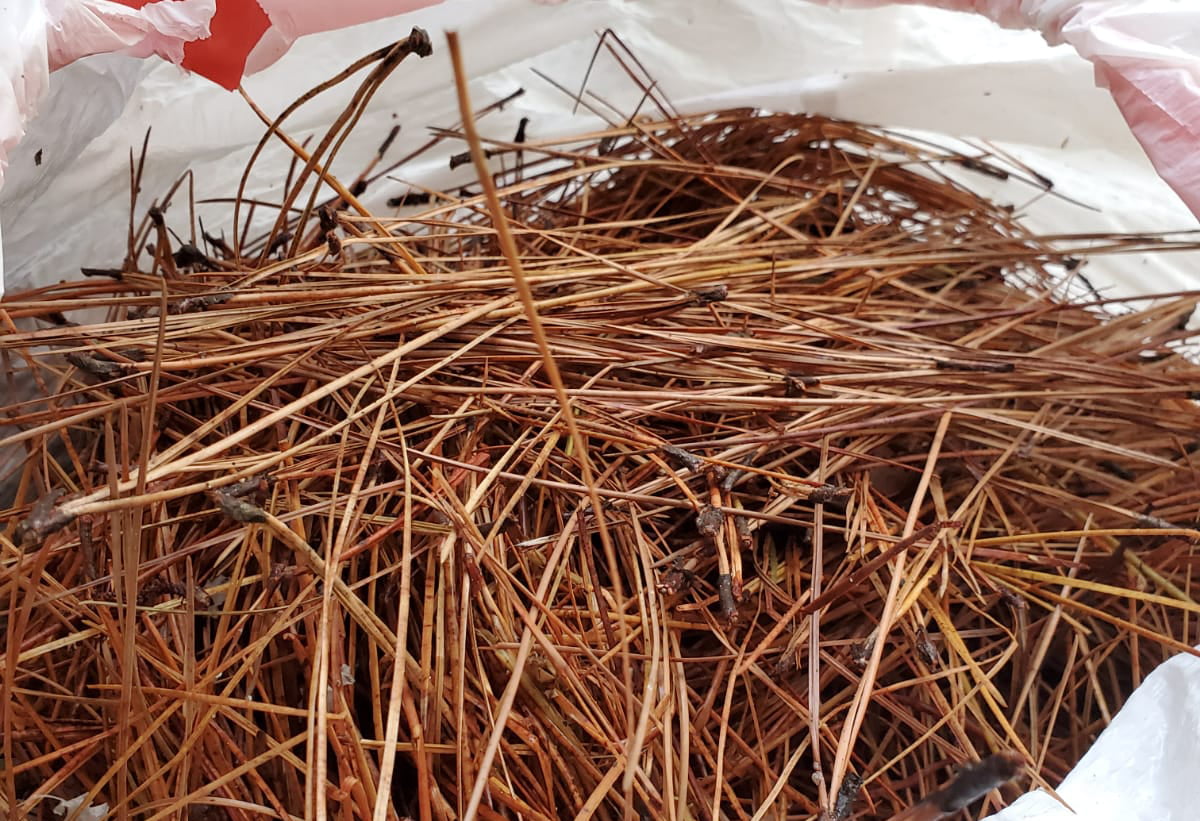Pine needles are an amazing gift of nature here in north Florida. Pine trees, types of evergreen conifers, are important not only to the Florida ecosystem but also constitute a part of the state’s industry.
The slash pine is the most widespread pine tree in Florida and is often mistaken for another native pine, the longleaf pine. Other native Florida pines, particularly in the north Florida area, include Loblolly Pine (Pinus taeda L.), Longleaf Pine (Pinus palustris Mill.), Slash Pine (Pinus elliottii Engelm.), and Spruce Pine (Pinus glabra Walter). Shortleaf Pine (Pinus echinata Mill) is also common in a small area of the panhandle, from the Aucilla River westward to Okaloosa County.1
Pine needles
- have medicinal qualities,
- can be used to flavor teas (tisanes), drinking vinegars (oxymels), and honey (or syrup),
- are amazing flavoring agents in smokers and grills,
- make effective fire starters,
- are known for their air freshening, and
- make excellent mulch.
Medicinal qualities
Pine is expectorative, antimicrobial, and anti-inflammatory and therefore has qualities that aid with sinus and lung congestion. The fresh, younger needles are also packed with Vitamin C.2
Teas, Drinking Vinegars, and Honey
Creating a pine needle infusion is perhaps the easiest way to enjoy their medicinal qualities. Vinegar and honey can also be infused with pine needles and other herbs for additional benefit and interesting taste combinations. For herbal preparations, particularly ones meant for teas, vinegars, and honeys, it’s best to harvest needles fresh from the tree.
Mulch
Pine needles break down slowly and can be used as a pine mulch, often called pine straw, or to line paths and don’t need replacing as often as other organic mulches. Traditional mulch can get washed or blown away during our stormy season, but pine needles interlock as they settle in, creating a durable, weather-proof ground cover that can prevent erosion. Pine mulch can also be an inexpensive choice. As long as you have a healthy growing pine tree with plenty of fallen needles, there’s no need to buy standard mulch. An additional benefit of using pine straw is that it can deter many garden pests because of its scent. It can also attract some pests, so it is best to aerate it a bit to keep it from locking in too much moisture when there is a lot of downpour.
When harvesting from directly under pines, make sure to leave some needles around the base of the pine tree roots to help nourish the trees and prevent moisture loss and excessive weeds. This is also important in the winter, in areas where frost is expected, to protect pine roots. It is also important to try not to disturb the soil under the needles. Pine roots can be damaged by excessive raking as their roots can grow close to the surface. Also, deep raking can pull up older needles that have mold, which is not good to use around landscape plants because it could spread that mold to other plants. For the same reason, avoid collecting wet pine needles unless you are going to be able to use them immediately.
There are several ways to collect pine needles for mulch.
- If you have pine needles in your yard or neighborhood and plan on making pine mulch, keep the area under the trees free of weeds and other debris that can collect. That way you can simply rake up the needles after storms and shedding and they will be relatively clean. Pines are known to shed heaviest between August and January.3
- You can also spread a tarp or old sheet out underneath trees and collect or rake up the pine.
- You can also collect it off sidewalks. Just make sure that there isn’t other debris or garbage.
Sources

